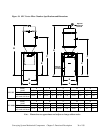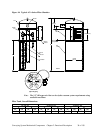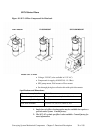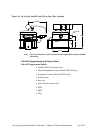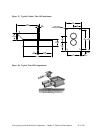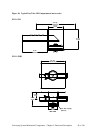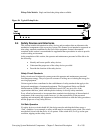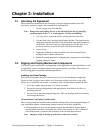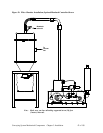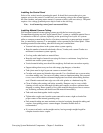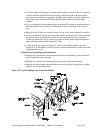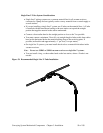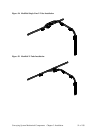
Conveying System Mechanical Components Chapter 2: Functional Description 44 of 138
At no time should the safety device fail and allow the operation to continue. For example, if
a safety switch is guarding a motor, and the safety switch fails, the motor should not be able
to run.
Safety Device Lock-Outs
Some safety devices disconnect electrical energy from a circuit. The safety devices that are
used on the mechanical components of the conveying system are primarily concerned with
electrical power disconnection and the disabling of moving parts that may need to be
accessed during the normal operation of the machines.
Some of the safety devices utilize a manual activator. This is the method of initiating the
safety lock out. This may be in the form of a plug, lever or a handle. Within this lockable
handle, there may be a location for a padlock. Personnel servicing the equipment should
place a padlock in the lockout handle.
In addition to the safety devices listed above, these mechanical components are equipped
with a line cord plug. This allows the operator or maintenance personnel to unplug the
system from its power source and tag it out. The plug can then be tagged with any number of
approved electrical lockout tags available at most electrical supply stores.
WARNING! Always disconnect and lockout all electrical power and pneumatic (i.e. compressed air)
sources prior to servicing or cleaning the conveying system. Failure to do so may result
in serious injury. No one but the person who installed the lockout may remove it.



